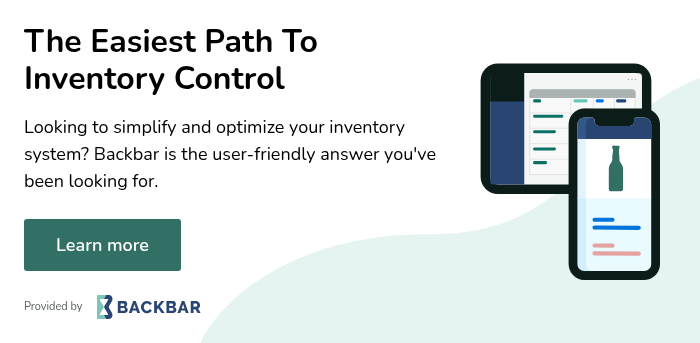Discover the rising trend of virtual restaurants, also known as ghost kitchens or cloud kitchens, operating solely through online platforms. These innovative food establishments specialize in specific cuisines or food types, catering to niche markets and targeting specific customer preferences.
Leveraging technology and delivery platforms like UberEats and DoorDash, virtual restaurants offer competitive pricing and attractive deals to budget-conscious diners. They have the flexibility to experiment with menus, personalize offerings using customer data, and scale their operations without physical expansion. Despite challenges such as quality control and competition, virtual restaurants show great promise in shaping the future of dining experiences.
What are Virtual Restaurants?
Virtual restaurants, also known as ghost kitchens or cloud kitchens, are food establishments that operate solely through online platforms. Unlike traditional restaurants, virtual restaurants do not have a physical storefront or dining area. Instead, they focus on preparing and delivering food directly to customers' homes or offices.
These virtual restaurants typically operate out of a shared kitchen space, where multiple restaurant concepts can coexist under one roof. They leverage technology to receive orders, manage inventory, and coordinate delivery logistics. Virtual restaurants often specialize in specific cuisines or food types, allowing them to cater to niche markets and target specific customer preferences.
@officialhungrypixel 👻 This may be the latest craze in the food industry… this new tech is taking over! #ghostkitchen #foodie #foodtech #ubereatsdriver
♬ Cafe / video cute lofi ♪ Chill(885831) - ImoKenpi-Dou
The Rise of Virtual Restaurants
Virtual restaurants have gained popularity in recent years due to several factors. First and foremost, the rise of food delivery platforms, such as UberEats and DoorDash, has made it easier for virtual restaurants to reach a wider customer base. These platforms provide a convenient way for customers to browse menus, place orders, and track deliveries.
Additionally, the lower operating costs of virtual restaurants make them an attractive option for entrepreneurs and chefs. Without the need for a physical dining space, virtual restaurants can save on expenses like rent, utilities, and staffing. This allows them to focus more on the quality of their food and invest in marketing efforts to attract customers.
Furthermore, the COVID-19 pandemic has accelerated the growth of virtual restaurants. With lockdowns and social distancing measures in place, dine-in options have become limited, leading to an increased demand for food delivery services. Virtual restaurants have been able to meet this demand and provide customers with a safe and convenient way to enjoy restaurant-quality meals at home.
Tips on How to Start a Virtual Restaurant or "Ghost Kitchen"
Starting a ghost kitchen, also known as a virtual restaurant or cloud kitchen, can be an exciting and lucrative venture in the food industry. Here are some key steps to help you get started:
1. Research and Planning: Begin by conducting thorough market research to identify the demand for specific cuisines or food types in your target area. Analyze the competition and customer preferences to determine your niche and unique selling points. Create a detailed business plan that outlines your goals, target audience, menu offerings, pricing strategy, and marketing approach.
2. Location and Infrastructure: Find a suitable shared kitchen space that meets your operational requirements. Consider factors such as kitchen layout, equipment availability, storage capacity, and accessibility to delivery partners. Ensure that the space complies with local health and safety regulations and obtain any necessary permits and licenses.
3. Menu Development: Design a menu that aligns with your target audience's preferences and differentiates your virtual restaurant from competitors. Focus on offering high-quality dishes that can be easily prepared, packaged, and delivered without compromising taste and presentation.
Experiment with menu items and gather feedback from potential customers to refine your offerings.
4. Technology and Operations: Invest in a robust online ordering system and delivery management platform to streamline your operations. These tools will enable you to efficiently receive and process orders, manage inventory, and track deliveries. Implement systems for quality control, ensuring consistency in taste, portion sizes, and packaging.
5. Marketing and Branding: Develop a strong brand identity and create a compelling online presence. Establish a visually appealing website and social media profiles that showcase your menu, unique selling points, and customer testimonials. Implement targeted digital marketing strategies to reach your desired audience, such as paid advertisements, influencer collaborations, and engaging content creation.
6. Partnership with Delivery Platforms: Collaborate with popular food delivery platforms like UberEats, DoorDash, or Grubhub to expand your reach and leverage their customer base. Ensure seamless integration between your online ordering system and the delivery platform to streamline order fulfillment and provide real-time tracking updates to customers.
7. Customer Engagement and Feedback: Prioritize customer satisfaction by actively engaging with your customers and collecting feedback. Implement loyalty programs, personalized promotions, and surveys to gather insights into their preferences and improve their dining experience. Utilize customer data analytics to identify trends, optimize your menu, and tailor offerings to individual preferences.
8. Continuous Improvement: Regularly evaluate your operations, menu, and customer feedback to identify areas for improvement. Stay updated on industry trends and consumer preferences to adapt your offerings accordingly. Continuously optimize your delivery logistics, customer service, and quality control processes to ensure a seamless and delightful experience for your customers.
Starting a ghost kitchen requires careful planning, attention to detail, and a strong focus on customer satisfaction. By following these steps and staying adaptable in an ever-evolving industry, you can position your virtual restaurant for success in the growing market of online food delivery.
Advantages of Virtual Restaurants
Virtual restaurants offer several advantages compared to traditional brick-and-mortar establishments. Firstly, their lower overhead costs enable them to offer competitive pricing and attractive deals to customers. This affordability can be especially appealing to budget-conscious diners.
Secondly, virtual restaurants have the flexibility to experiment with different menus and cuisines without the constraints of a physical location. This allows them to cater to a wide range of tastes and preferences, and they can easily pivot their offerings based on customer feedback and market trends.
Thirdly, virtual restaurants can leverage customer data and analytics to personalize their offerings and improve the overall dining experience. By analyzing order history and customer preferences, they can recommend menu items and promotions tailored to individual customers, enhancing customer satisfaction and loyalty.
Lastly, virtual restaurants can operate in multiple locations simultaneously without the need for physical expansion. This scalability allows them to reach a larger customer base and increase their revenue potential.
Challenges Faced by Virtual Restaurants
While virtual restaurants offer numerous advantages, they also face unique challenges. One of the main challenges is maintaining quality control and consistent food standards. Without direct oversight of the food preparation process, there is a risk of variations in taste and presentation.
Another challenge is ensuring efficient and timely delivery. Virtual restaurants heavily rely on third-party delivery services, and any delays or mishandling can negatively impact the customer experience. Coordinating with multiple delivery partners and managing logistics can be complex and require careful coordination.
Additionally, virtual restaurants may face stiff competition in the online food delivery market. With the increasing popularity of this business model, more virtual restaurants are entering the market, leading to a crowded and competitive landscape. Standing out from the competition and building a strong brand identity can be a challenge.
Lastly, virtual restaurants may also face legal and regulatory challenges, as they need to comply with local food safety and licensing requirements. Adhering to these regulations and maintaining high standards of hygiene is crucial to ensure customer satisfaction and prevent any potential legal issues.
The Future of Virtual Restaurants
The future of virtual restaurants looks promising. As technology continues to advance, virtual restaurants will have access to more sophisticated tools for order management, inventory control, and delivery optimization.
Additionally, virtual restaurants can leverage data analytics and artificial intelligence to gain insights into customer preferences and optimize their menus and promotions. This data-driven approach will enable them to provide personalized dining experiences and improve customer satisfaction.
Furthermore, virtual restaurants have the potential to collaborate with existing brick-and-mortar restaurants and create hybrid models that combine the benefits of both formats. This partnership can help traditional restaurants expand their reach and adapt to changing consumer preferences, while virtual restaurants can benefit from established brand recognition and customer loyalty.
Overall, virtual restaurants are likely to continue growing in popularity as consumers increasingly embrace the convenience and variety they offer. As the food industry evolves, virtual restaurants will play a significant role in shaping the future of dining experiences.
%20BLANK%20(5).jpg?height=400&name=Blog%20Header%20(smaller)%20BLANK%20(5).jpg)



